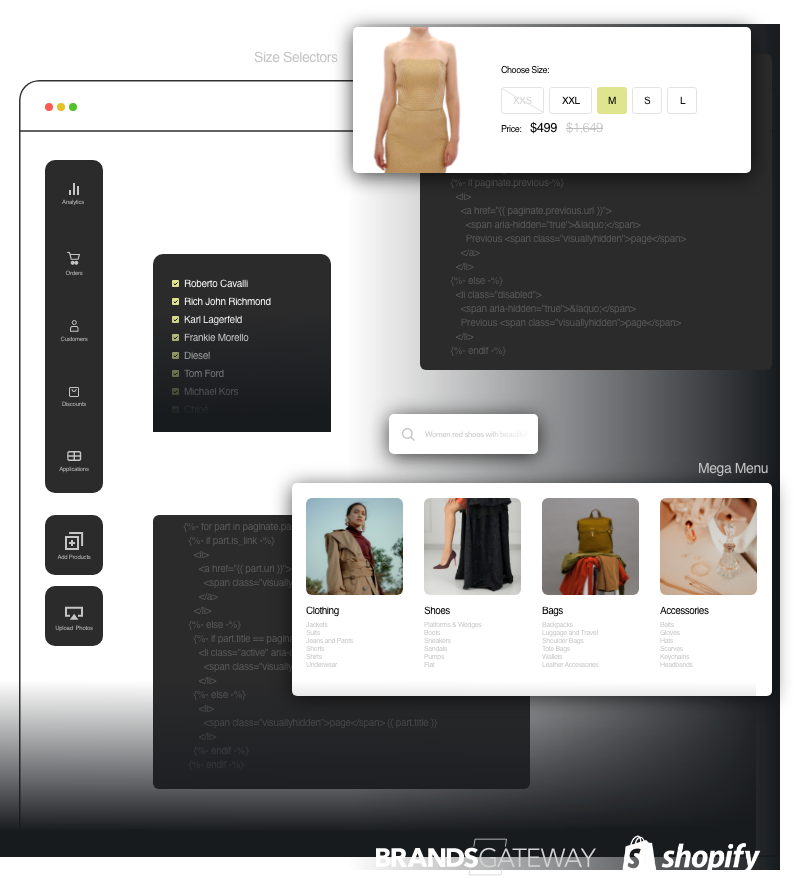Email marketing is one of the most powerful tools for Shopify store owners to boost sales, nurture customers, and build long-term loyalty. The best part? With automation, you can set up systems that work for you 24/7 — sending the right message to the right person at the right time. In this guide, we’ll break down why email marketing automation matters, how to set it up on Shopify, and the essential flows every store should have.
Why Email Marketing Automation Is Essential for Shopify Stores
Unlike one-off campaigns, automated emails are triggered by customer behavior or key events. This makes them:
● Timely → Customers receive emails when they’re most engaged (e.g., after signup or
checkout).
● Personalized → Emails adapt to customer actions and preferences.
● Scalable → Once set up, they keep running with minimal effort.
● Profitable → Email generates some of the highest ROI in e-commerce (often $36+ for every $1 spent). For Shopify stores, this means fewer missed opportunities and more repeat purchases.
Best Email Marketing Tools for Shopify
Shopify connects seamlessly with many email marketing apps. Each tool has its own strengths, depending on whether you’re just starting out or ready to scale your business. Here are the most popular options:
1. Shopify Email
● Best for beginners and small stores
Shopify’s own built-in email tool is simple, affordable, and directly integrated with your store. It allows you to send newsletters, promotional campaigns, and basic automations like welcome and abandoned cart emails. It’s perfect if you’re just getting started and want an easy solution without extra costs.
2. Klaviyo
● Best for advanced automation and segmentation
Klaviyo is the go-to platform for scaling Shopify brands. It allows deep segmentation (based on browsing history, purchase frequency, and customer lifetime value), making it highly personalized. You can create advanced flows like birthday campaigns, VIP rewards, and multi-step abandoned cart emails. Klaviyo also integrates seamlessly with SMS marketing for a true omnichannel experience.
3. Omnisend
● Best for multichannel e-commerce marketing
Omnisend combines email, SMS, and push notifications in one platform. It offers pre-built e-commerce workflows (welcome series, cart recovery, order confirmation), making setup quick. It also has gamified signup forms (like spin-to-win popups) to help grow your email list faster. Great for Shopify stores that want both automation and creative engagement tools.
4. Mailchimp
● Best for flexibility and integrations
Mailchimp is one of the most well-known email marketing tools. Although it’s not built specifically for Shopify, it integrates well and offers a wide range of templates, campaign analytics, and A/B testing. It’s especially good for businesses that already use Mailchimp across other channels and want a familiar interface.
5. Privy
● Best for list building and popups
Privy focuses on growing your email list with popups, banners, and spin-to-win wheels. It also supports abandoned cart emails and basic campaigns, but it shines most as a list-growth tool. Many Shopify store owners use Privy together with another email platform (like Klaviyo or Omnisend) to maximize results.👉 Pro tip: If you’re just starting out, Shopify Email or Privy is enough. But if you plan to scale and want advanced automation, Klaviyo or Omnisend are the industry standards.
Essential Email Automations for Shopify Stores
Here are the must-have automated email flows every Shopify store should set up:
1. Welcome Flow
Triggered when someone signs up for your newsletter.
● Introduce your brand story.
● Share bestsellers or top collections.
● Offer a discount code for first purchase.
2. Abandoned Cart Recovery
Triggered when someone leaves items in their cart.
● Remind them of what they left.
● Add urgency (low stock, limited-time offer).
● Offer an incentive (free shipping or discount).
3. Post-Purchase / Thank You Flow
Triggered after a customer completes a purchase.
● Thank them and confirm the order.
● Share tips on using the product.
● Upsell complementary products.
4. Win-Back Flow
Triggered when a customer hasn’t purchased in a while.
● “We miss you” reminder.
● Special discount to return.
● Showcase new arrivals.
5. Browse Abandonment Flow
Triggered when a customer views products but doesn’t add to cart.
● Highlight the items they looked at.
● Suggest related products.
● Encourage them to revisit.
6. Loyalty & VIP Flow
Triggered when a customer reaches milestones (e.g., 5th order, high spend).
● Reward them with exclusive offers.
● Give early access to sales.
● Invite to loyalty programs.
Best Practices for Shopify Email Automation
● Segment your audience (new vs. repeat customers, location, purchase history).
● Keep emails branded (consistent colors, fonts, and voice).
● Test subject lines & send times to improve open rates.
● Use clear CTAs (“Shop Now,” “Claim Offer,” “See New Arrivals”).
● Avoid over-sending → Quality over quantity.
Final Thoughts
Email marketing automation with Shopify is not just a “nice-to-have” — it’s a revenue driver. By setting up a few essential flows, you can create a personalized shopping experience that keeps
customers coming back. Start small with a welcome flow and cart recovery, then expand into more advanced automations as your store grows. The sooner you set these up, the sooner you’ll see the long-term benefits.

